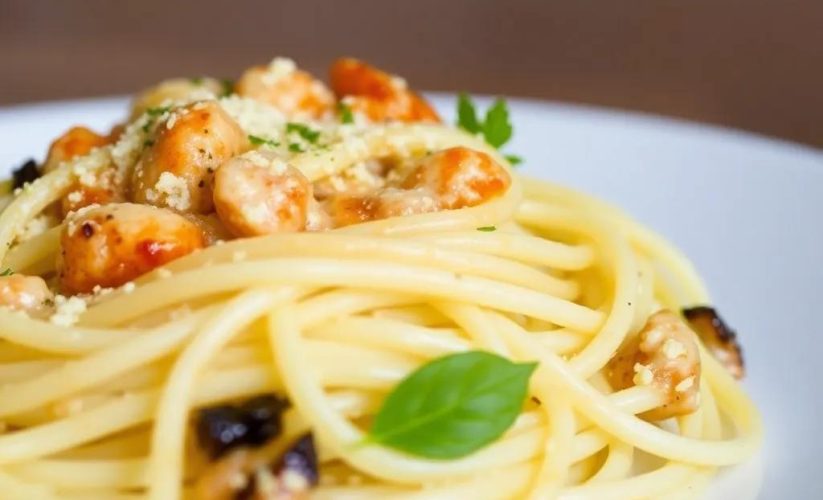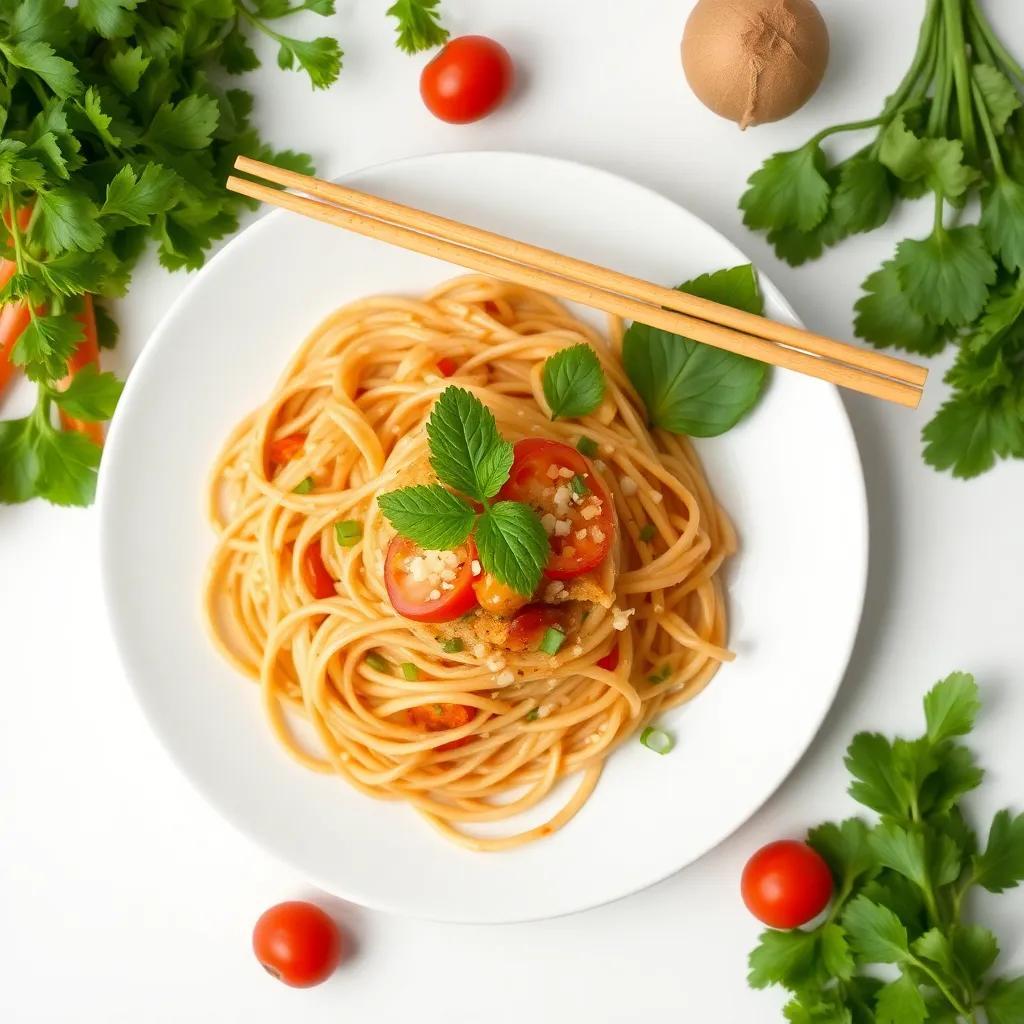Authentic Tom Yum Soup Recipe: Easy, Flavorful & Gluten-Free Guide

Authentic Tom Yum Soup Recipe: Easy, Flavorful & Gluten-Free Guide
🌍 Cuisine: Thai
⚙️ Difficulty: Easy
Ingredients
- 4 cups chicken broth (gluten-free)
- 2 stalks lemongrass, cut into 2-inch pieces and smashed
- 3-4 kaffir lime leaves, torn into pieces
- 3-4 slices galangal
- 200g (7 oz) shrimp, peeled and deveined
- 100g (3.5 oz) mushrooms (straw mushrooms or button mushrooms), halved
- 2-3 Thai bird’s eye chilies, smashed (adjust to taste)
- 3 tablespoons fish sauce (check for gluten-free)
- 2 tablespoons fresh lime juice
- 1 teaspoon chili paste (nam prik pao), optional
- 1 teaspoon sugar
- Fresh cilantro leaves for garnish
- 2 shallots, thinly sliced
- Water or extra broth, as needed
Nutrition Facts
180
Instructions
- In a large pot, bring the chicken broth to a boil over medium-high heat.
- Add the smashed lemongrass stalks, kaffir lime leaves, sliced galangal, and shallots to the broth. Reduce heat and simmer for 10 minutes to infuse the flavors.
- Remove the lemongrass, lime leaves, galangal, and shallots from the broth using a slotted spoon or strain the broth if preferred.
- Add the mushrooms and bird’s eye chilies to the broth and simmer for 3–4 minutes until mushrooms are tender.
- Add the shrimp to the pot and cook until they turn pink and opaque, about 2–3 minutes.
- Stir in fish sauce, lime juice, sugar, and optional chili paste (nam prik pao). Taste and adjust seasoning by adding more lime juice or fish sauce if needed.
- If the soup is too strong, add a little water or extra broth to dilute to your preference.
- Turn off the heat and ladle the soup into serving bowls.
- Garnish with fresh cilantro leaves just before serving.
- Serve hot as a starter or a light meal along with steamed jasmine rice.
Serving Suggestions
- Serve with steamed jasmine rice for a complete meal.
- Pair with Thai fresh spring rolls or satay skewers as appetizers.
- Add extra fresh Thai basil leaves or green onions for more aroma.
- Pair with a cold light lager or Thai iced tea to complement the spicy flavors.
- Include a side of mango sticky rice for dessert to balance spice with sweetness.
- Serve in hot stone bowls to keep the soup warm longer at the table.
- For a vegetarian option, replace shrimp with tofu and use vegetable broth.
Table of Contents

Intro
There’s something truly captivating about a bowl of Tom Yum Soup—a perfect harmony of bold, bright, and comforting flavors that awaken the senses with every spoonful. This authentic recipe captures that essence beautifully, offering a deliciously vibrant experience that’s surprisingly simple to create at home. Whether you’re looking to impress guests with an exotic starter or craving a warming yet light meal on a chilly evening, Tom Yum fits seamlessly into the menu.
What makes this soup particularly exciting is its balance of tangy, spicy, and savory notes wrapped in a naturally gluten-free package, making it accessible for many dietary preferences. Plus, the relatively short prep and cook times mean you don’t have to wait long to enjoy this classic Thai comfort dish. From casual weeknight dinners to festive gatherings, Tom Yum Soup brings warmth and zest to every occasion, promising a delightful lift to your culinary repertoire without overwhelming your kitchen routine.
Ingredient Notes
When it comes to crafting an authentic and flavorful Tom Yum Soup, a few key ingredients make all the difference by layering that signature zesty, herbal, and spicy profile. Understanding these flavorful stars will help you source the best and substitute wisely if needed.
Lemongrass: This fragrant stalk is central to Tom Yum’s bright citrus aroma. Fresh lemongrass has firm, pale green stalks with a slightly lemony scent and a hint of ginger. When shopping, look for firm, unblemished stalks with a fresh snap when bent. The tough outer layers are usually removed before cooking, and the stalks are gently smashed to release their oils. If fresh lemongrass is unavailable, frozen lemongrass is a good alternative—just thaw before use. As a last resort, finely grated lemon zest combined with a touch of ginger can mimic the effect, though it lacks the full depth.
Kaffir Lime Leaves: These glossy, double-lobed leaves provide a highly distinctive, bright citrus flavor that’s difficult to replicate. Fresh leaves bring a fragrant sharpness and a slight bitterness that lifts the soup’s complexity. If you can’t find fresh, dried kaffir lime leaves are widely available and still quite aromatic—just crush them lightly to release their oils before adding. Some cooks use a small amount of lime zest combined with a bay leaf as a substitute, but it won’t capture the exact essence.
Galangal: Often confused with ginger, galangal is a knobby root with a sharper, piney, and slightly peppery flavor. It’s essential for authentic depth and earthiness in Tom Yum. When fresh, choose firm roots with smooth skin, free of wrinkles or soft spots. Slice thinly to infuse the broth. If fresh galangal isn’t accessible, dried galangal powder can suffice in a pinch, but use sparingly as it’s more concentrated. Fresh ginger or a mix of ginger and a tiny bit of ground white pepper may stand in, but it will lack the characteristic brightness unique to galangal.
Fish Sauce: This salty, umami-rich liquid seasoning is indispensable for the soup’s savory backbone. Since Tom Yum relies heavily on fish sauce for its authentic salty depth, choosing a good-quality brand labeled gluten-free is important for both flavor integrity and dietary needs. If you don’t consume fish sauce, tamari or coconut aminos can be used as alternatives, but the flavor will be milder and less pungent, so adjust quantities and consider adding a touch of seaweed broth for umami enhancement.
Each of these ingredients is a cornerstone that shapes the final flavor and aroma of your Tom Yum Soup. Embracing their unique profiles and sourcing the freshest versions you can find—or smart substitutes—ensures your homemade bowl carries the vibrant soul of traditional Thai cooking.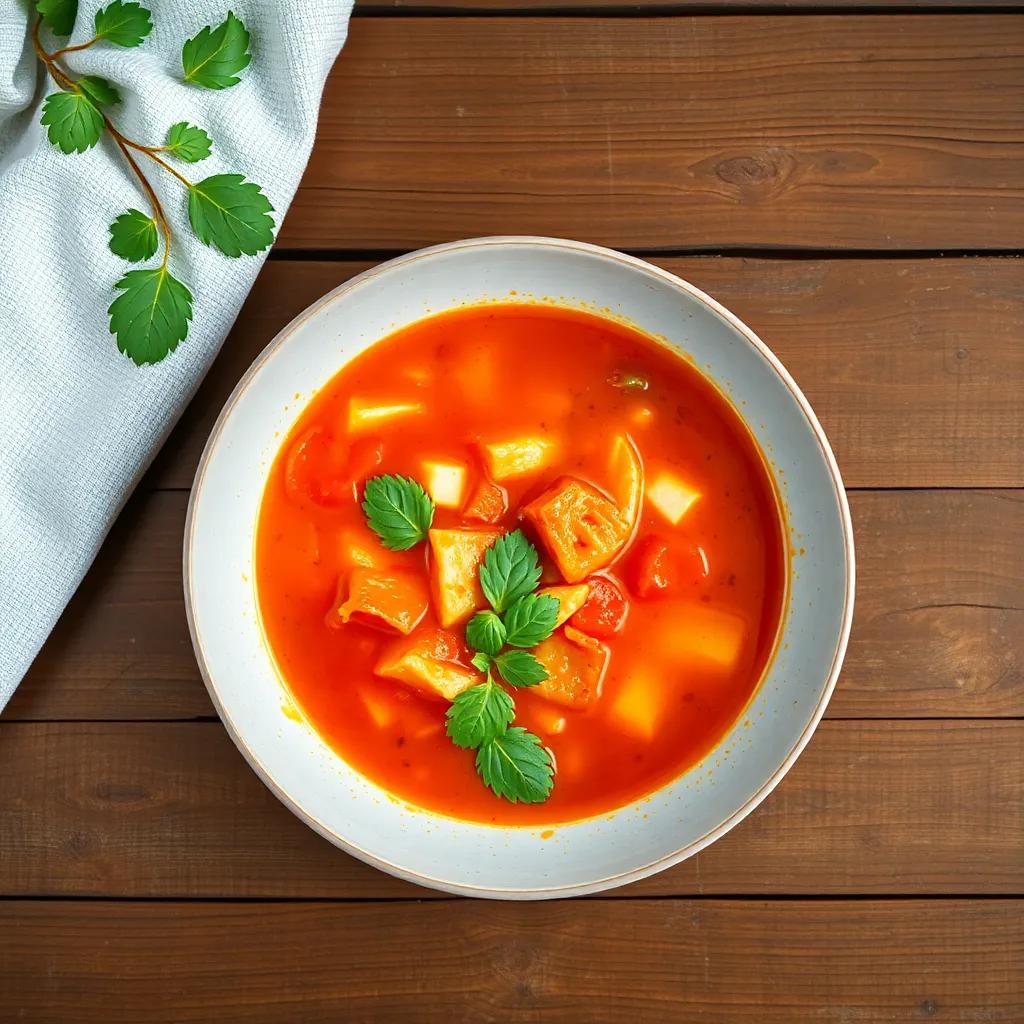
Tips & Variations
Crafting the perfect bowl of Tom Yum Soup is as much about technique as it is about ingredients. Here are some expert tips and creative variations to help you customize this vibrant Thai classic to your liking, dietary needs, or what’s on hand in your kitchen.
- Layer Your Flavors: Don’t rush the simmering step with lemongrass, kaffir lime leaves, galangal, and shallots. Giving these aromatics ample time to steep—at least 10 minutes—allows the broth to soak up their full complexity. If you prefer a lighter broth, shorten this time; for a more intense punch, let it go a bit longer, but avoid boiling aggressively to keep flavors bright and fresh.
- Adjust Heat Levels Mindfully: Thai bird’s eye chilies pack serious heat, but everyone’s spice tolerance differs. Start with one or two chilies, and add more after tasting. For a smoky twist, try dry-roasting the chilies before smashing them into the soup. Alternatively, swap in milder red chilies or even a dash of chili flakes if fresh isn’t available.
- Nam Prik Pao – The Secret Umami Booster: While optional, adding a teaspoon of this Thai chili paste brings a subtle sweetness, smokiness, and depth. If you don’t have nam prik pao, a small spoonful of roasted red pepper paste or even a teaspoon of miso can nudge the flavor in that direction.
- Protein Swaps & Vegan Adaptations: Though shrimp is traditional, Tom Yum is incredibly flexible. For a gluten-free and vegan version, substitute vegetable broth and tofu, adding extra mushrooms or even hearty root vegetables like carrots or baby corn. For a richer protein boost, try chicken pieces or scallops—just be sure to adjust cooking times accordingly.
- Balance Brightness and Saltiness at the End: The trick to authentic Tom Yum is tasting as you go, especially when adding fish sauce, lime juice, and sugar. These three balance each other—acid, salt, and a tiny bit of sweetness. Don’t hesitate to tweak each until the flavors sing harmoniously on your palate.
- Mushroom Choices Matter: Straw mushrooms provide the classic texture and mild earthiness, but button or oyster mushrooms work beautifully, especially if you want more bite. For a fun twist, experiment with shiitake mushrooms for a woodier, more robust flavor.
- Add Fresh Herbs Just Before Serving: Cilantro is traditional, but if you want to play with herbs, try garnishing with Thai basil leaves or a few sprigs of mint for a refreshing lift. Adding fresh herbs too early can blunt their bright aroma.
- Use Quality Broth for a Fuller Flavor: Homemade chicken or vegetable broth gives you a cleaner, fresher taste, but if you’re using store-bought, opt for low-sodium, gluten-free versions so you can control salt levels and keep the soup balanced.
- Stretch the Soup Without Losing Character: If you need to make a bigger batch or prefer a milder soup, use water sparingly but bolster flavor with an extra smashed lemongrass stalk or a few more lime leaves to keep it vibrant without dilution.
- Serving Suggestions to Elevate Experience: For an elegant presentation, serve Tom Yum in individual coconut shell bowls or cocktail glasses for a party appetizer. Pair with crunchy Thai chili oil drizzled on top for a textural contrast.
Embracing these tips and variations transforms your homemade Tom Yum Soup from good to truly memorable—whether you crave the classic authentic style or want a version tailored perfectly to your taste and lifestyle.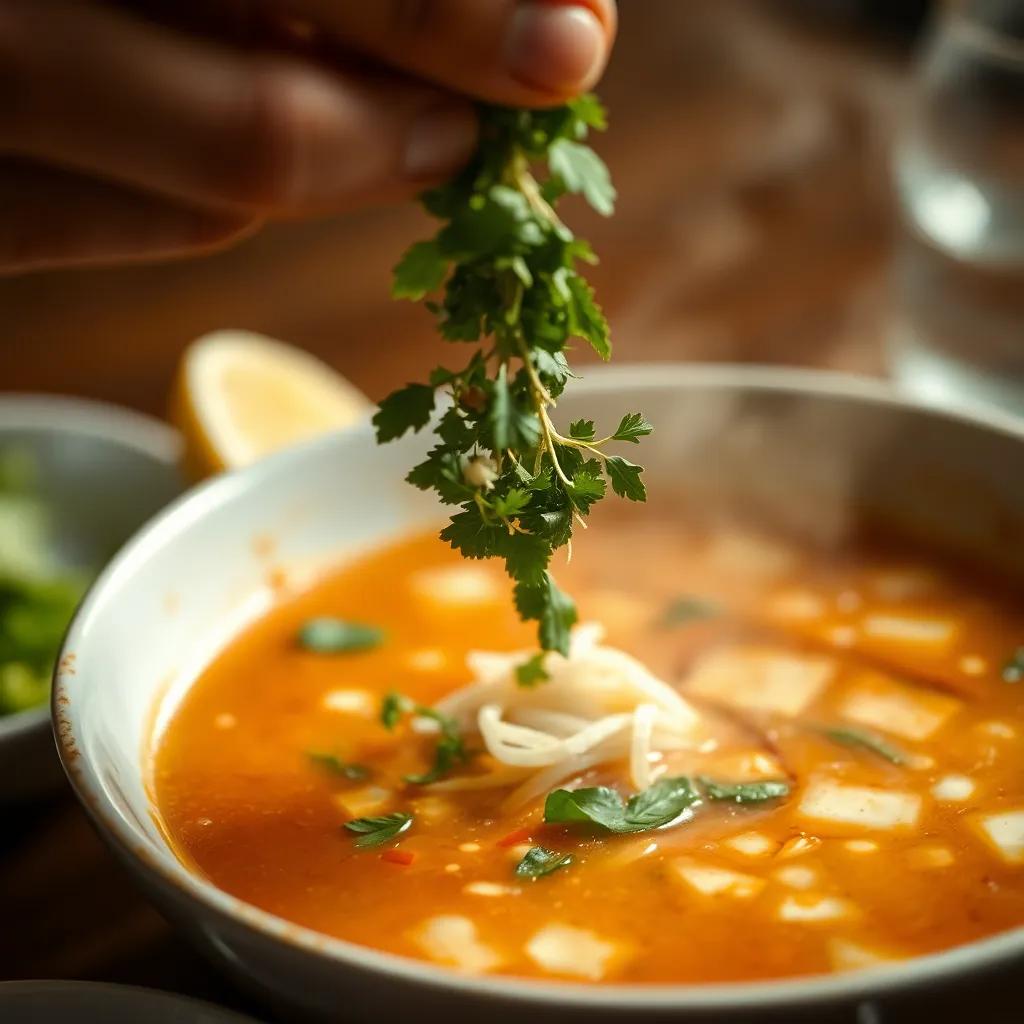
Leftovers & Storage
After savoring the vibrant and aromatic flavors of your homemade Tom Yum Soup, you might find yourself with some delicious leftovers. Fortunately, this soup stores quite well, allowing you to enjoy its zesty goodness beyond the initial meal without sacrificing quality or taste.
To keep your Tom Yum Soup fresh, transfer any remaining portions into airtight containers as soon as it cools to room temperature—ideally within two hours of cooking. Glass containers with secure lids work best because they won’t absorb odors or stains, but BPA-free plastic containers are also convenient for stacking and reheating. Avoid leaving the soup uncovered in the fridge, as this can cause the bright flavors to fade and the broth to absorb other odors.
In the refrigerator, your Tom Yum Soup will stay fresh for about 2 to 3 days. Because the soup contains seafood (shrimp), it’s important to consume leftovers promptly to ensure safety and maintain texture—shrimp can become rubbery if kept too long. Before reheating, give the soup a good stir and taste; you might need to brighten the broth with a splash of fresh lime juice or a pinch of fish sauce to revive its signature tang and umami after chilling.
If you want to save your Tom Yum Soup for a longer period, freezing is an option but with some caveats. Transfer the cooled soup into freezer-safe containers or heavy-duty freezer bags, leaving some headspace for expansion. The soup can be frozen safely for up to 2 months. When ready to enjoy, thaw it overnight in the fridge and reheat gently on the stovetop over low heat. Note that the texture of mushrooms and shrimp may soften slightly after freezing, so it’s best to eat frozen soup sooner rather than later for optimal quality.
This soup also makes an excellent candidate for meal prepping because it maintains its flavorful punch even after reheating. Prepare individual portions in separate containers for easy grab-and-go lunches or quick dinners on busy days. Just remember to add fresh cilantro and any delicate herbs only when serving, as these lose their brightness after sitting in soup.
Lastly, if packing Tom Yum Soup for work or travel, use insulated thermoses or airtight lunch jars designed for hot liquids. These containers help retain heat and flavor while preventing leaks, ensuring your vibrant, warming soup is still delicious hours later.
By following these storage tips, you can extend the life of your authentic Tom Yum Soup and enjoy its bold, tangy, and comforting flavors whenever you please—making every spoonful just as exciting as the first.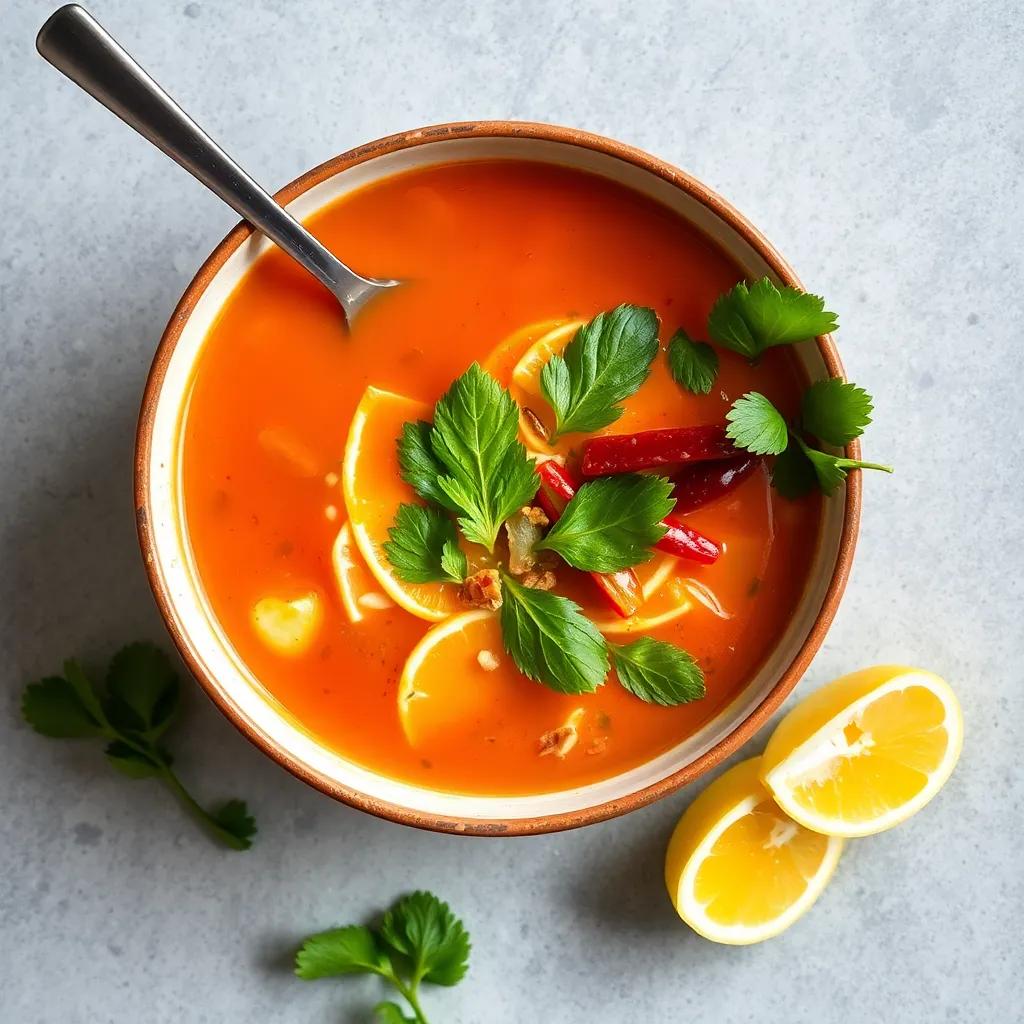
Behind the Recipe
Tom Yum Soup is much more than just a flavorful dish; it’s a culinary ambassador that carries the heart and soul of Thai culture in every bowl. Originating from central Thailand, this soup exemplifies the Thai philosophy of balancing hot, sour, salty, and sweet elements to create a harmonious eating experience. Traditionally enjoyed as a warming communal meal, Tom Yum was often prepared fresh daily by families and street vendors alike, showcasing the vibrant fresh ingredients indigenous to the region.
The roots of Tom Yum trace back centuries, evolving through generations as local cooks refined its blend of herbs and spices. The soup’s name itself—“Tom” meaning “boiled” and “Yum” translating to “mix”—reflects the cooking style and the mingling of bold flavors that define the dish. It embodies the Thai appreciation for herbs like lemongrass, kaffir lime leaves, and galangal, ingredients deeply intertwined with local agriculture and traditional medicine practices.
On a personal note, many home cooks cherish Tom Yum as a go-to comfort soup that both revives and excites. It’s a dish often tied to memories of family dinners, bustling markets, or tropical evenings spent enjoying fresh seafood, embodying warmth and conviviality. The naturally gluten-free nature of the soup has also helped it gain popularity worldwide, bridging culinary traditions across cultures.
Today, making authentic Tom Yum at home brings a slice of Thailand’s culinary heritage into your kitchen. It’s not just about assembling ingredients — it’s about honoring a centuries-old tradition of hospitality and flavor artistry. Each step—from gently bruising lemongrass stalks to balancing the pierce of bird’s eye chilies—connects you to this cultural story, enriching not just your palate but the experience of cooking itself.
FAQ
Can I use tofu instead of chicken in Tom Yum Soup?
How can I store and reheat leftover Tom Yum Soup?
What can I use if I can’t find kaffir lime leaves or galangal?
Is this recipe naturally gluten-free, or do I need to make substitutions?
Can I adjust the spice level to make Tom Yum Soup milder?
What’s the best way to prep fresh herbs like lemongrass and kaffir lime leaves?
Can I add other vegetables or proteins to customize Tom Yum Soup?
Try It Yourself
There’s something truly special about this authentic Tom Yum soup recipe—it’s a vibrant dance of flavors that’s as comforting as it is exciting, all while being easy to make and completely gluten-free. Whether you’re new to Thai cooking or a seasoned foodie, this recipe invites you to bring a little zest and warmth to your table with every spoonful.
We’d love to hear how your Tom Yum adventure turns out! Feel free to leave a comment, share your rating, or tell us about your own unique twist on the recipe. Happy cooking, and here’s to many delicious bowls ahead!


